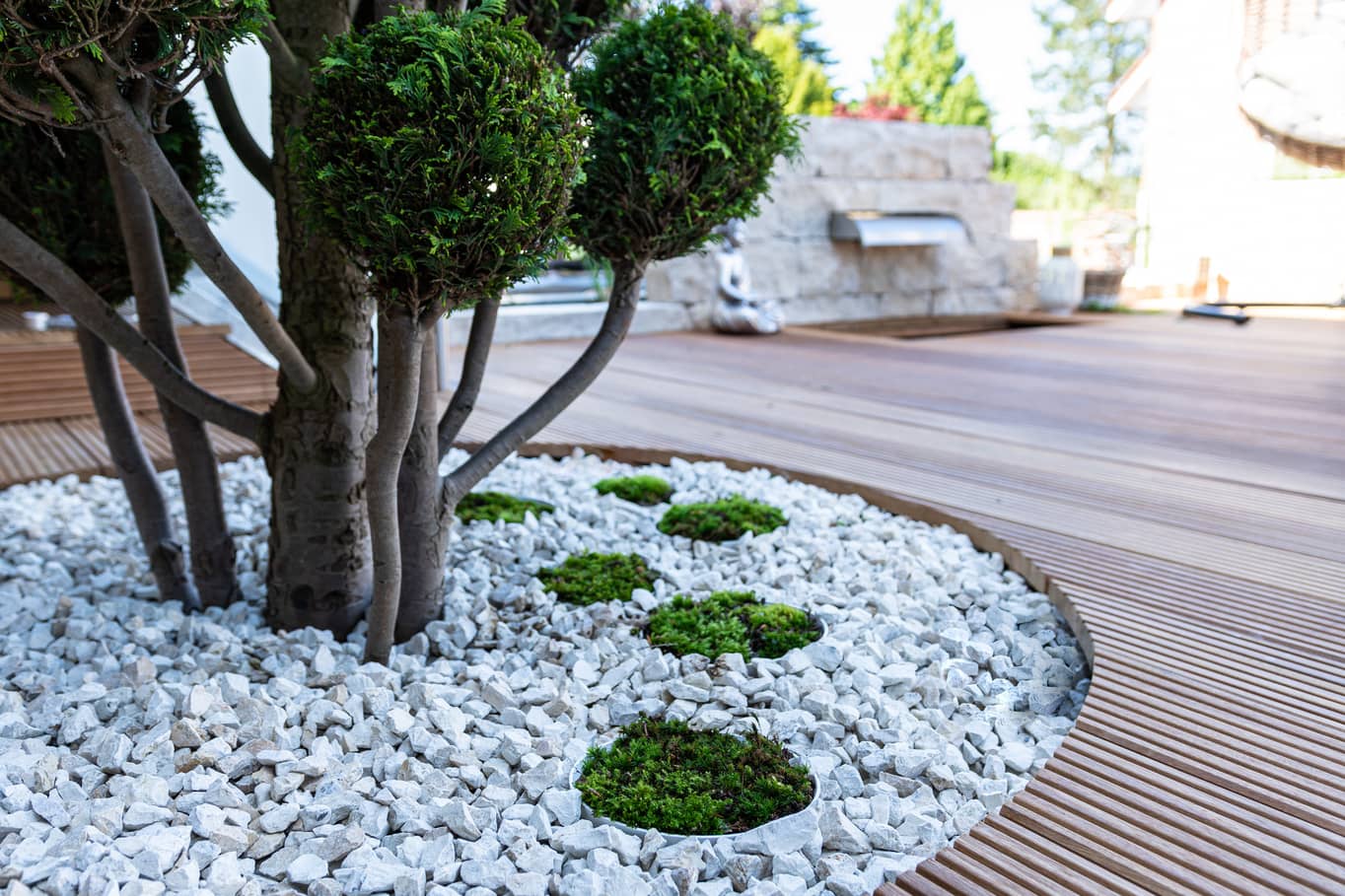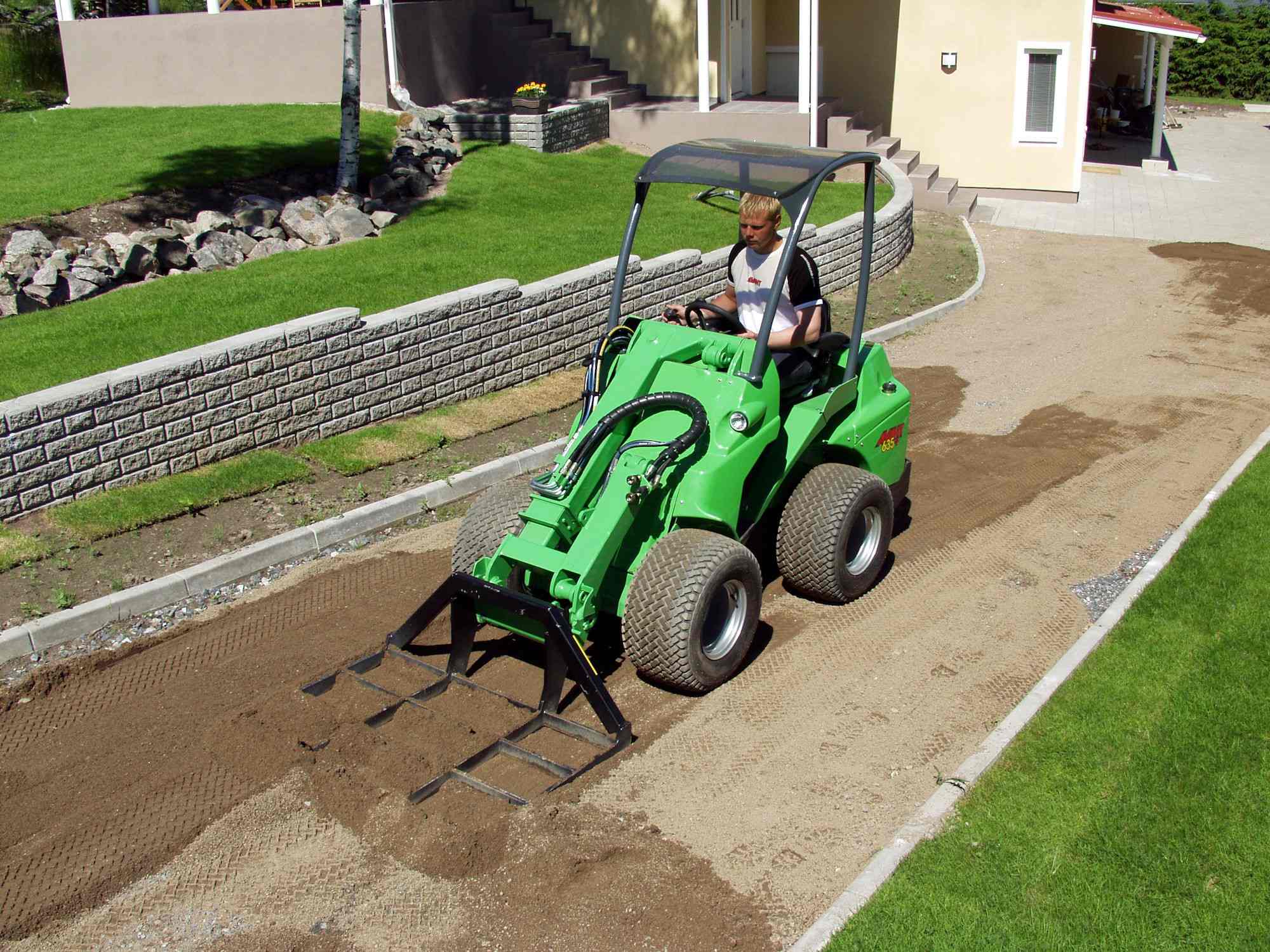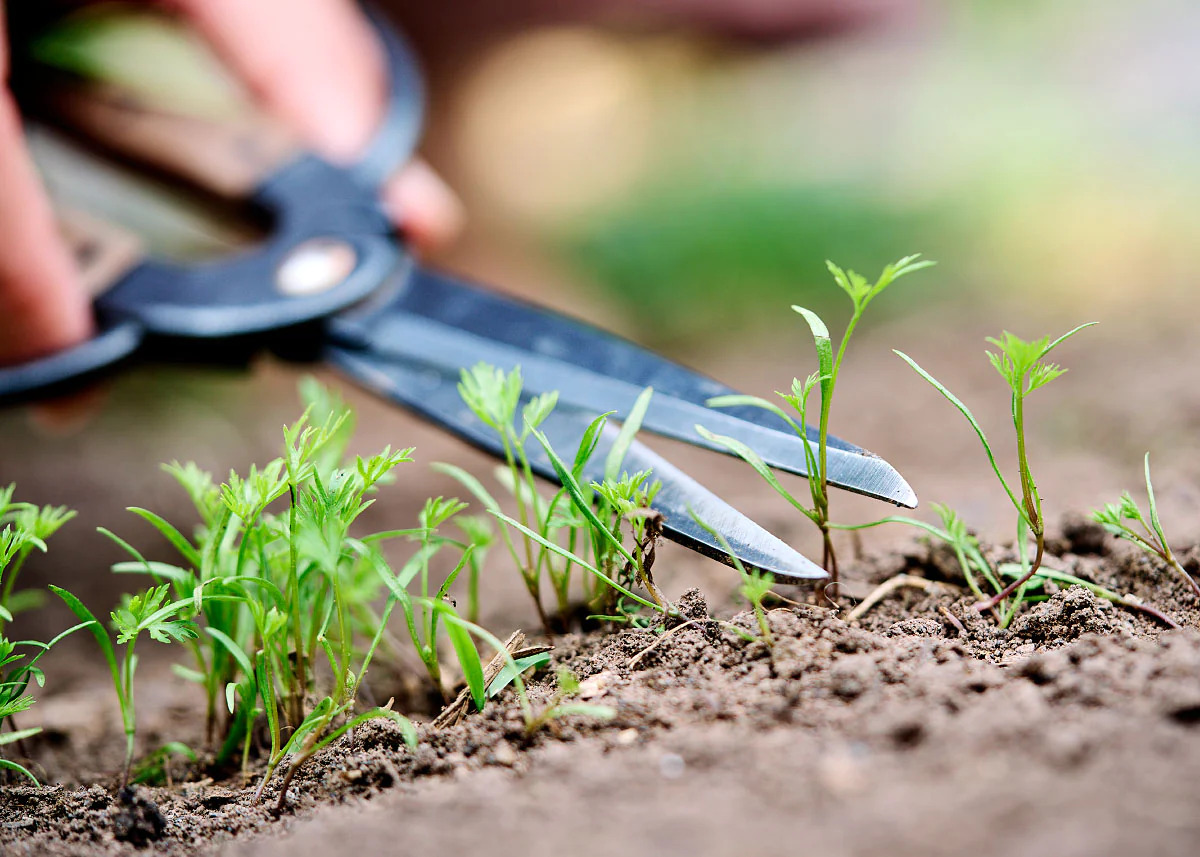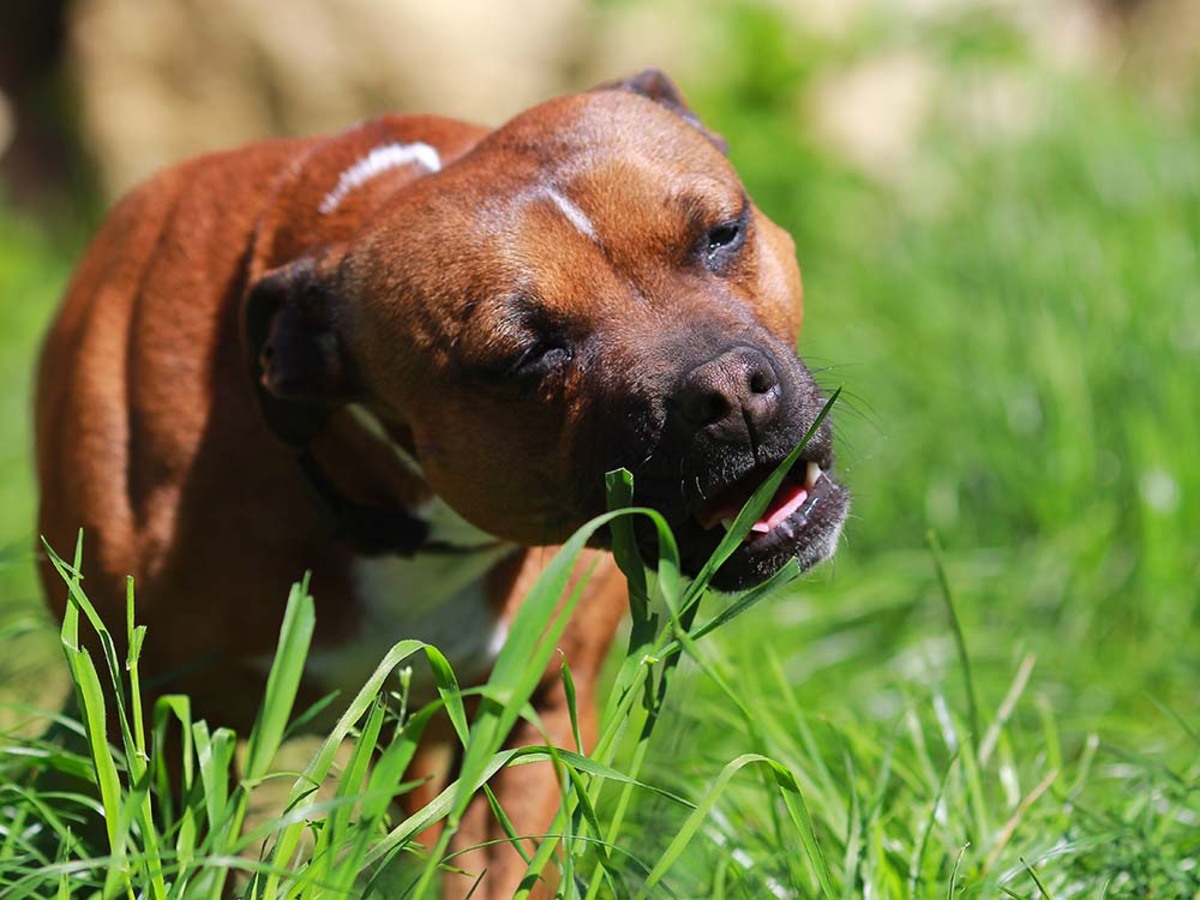Home>Gardening Tips and Tricks>Problem Solving>How To Keep Dogs Out Of Landscaping
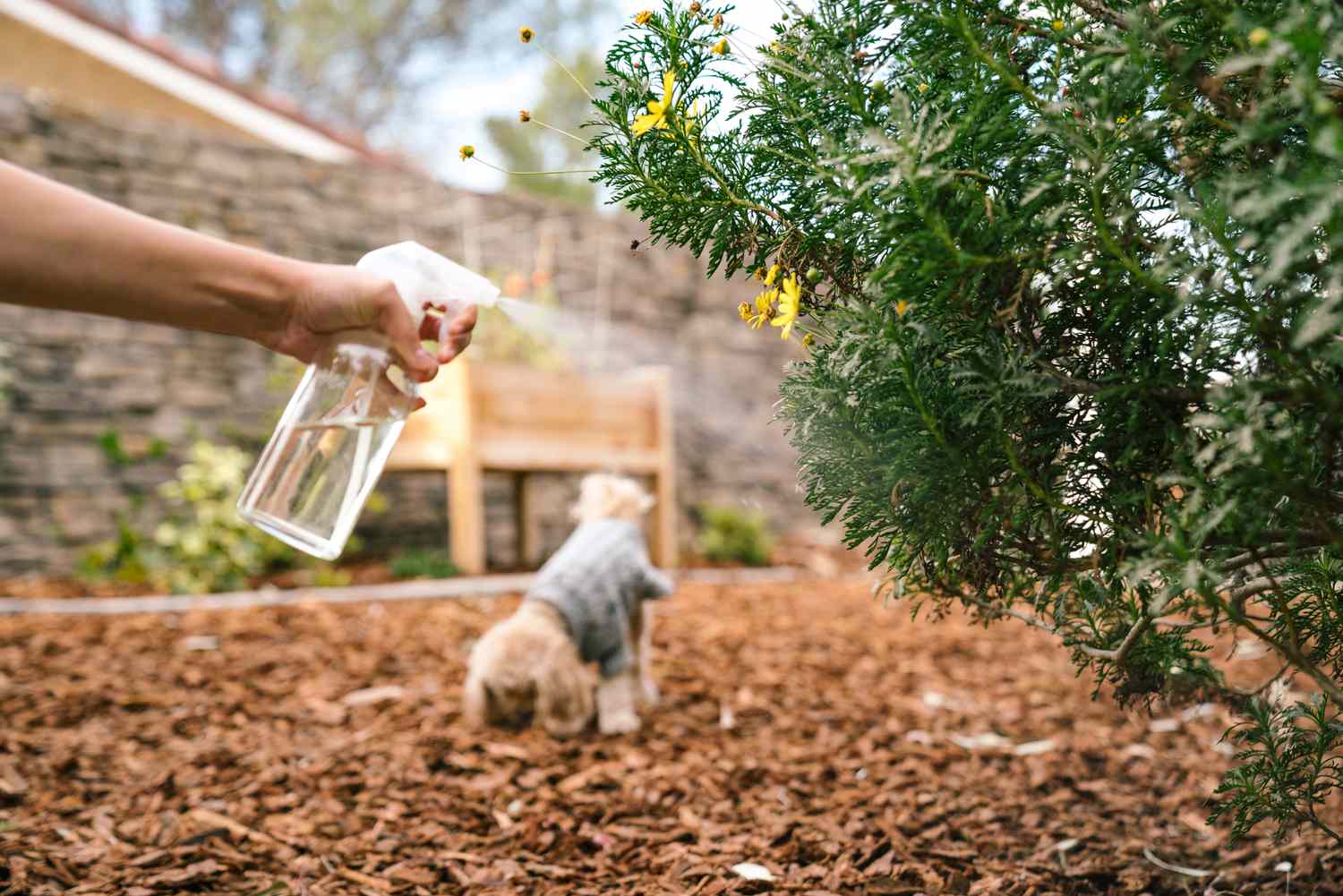

Problem Solving
How To Keep Dogs Out Of Landscaping
Published: August 17, 2023
Looking for solutions to keep dogs out of your landscaping? Our guide on problem solving will help you find effective strategies and tips to protect your outdoor space.
(Many of the links in this article redirect to a specific reviewed product. Your purchase of these products through affiliate links helps to generate commission for Chicagolandgardening.com, at no extra cost. Learn more)
Table of Contents
Introduction
Welcome to the article on how to keep dogs out of landscaping. We all love our furry friends, but sometimes they can wreak havoc on our beautifully manicured gardens and landscapes. From digging up plants to leaving unwanted surprises behind, it can be frustrating to maintain a pristine outdoor space with a mischievous pup around. However, with the right strategies and techniques, you can create a dog-friendly yet well-maintained landscape.
In this article, we will explore various methods to address the issue of dogs disturbing your landscaping. From understanding the problem to analyzing potential solutions, we will cover everything you need to know. By implementing these strategies, you can strike a balance between having a lovely outdoor area and keeping your furry companion happy.
While it may seem like an uphill battle, there are effective and humane ways to deter dogs from damaging your landscaping. From fencing options to planting strategies, we will explore a range of techniques that suit different situations and budgets. Additionally, we will discuss repellent techniques, creating dog-friendly spaces, and even training and behavior modification methods that can help prevent incidents.
Whether you are a homeowner, a gardener, or a pet owner, this article will provide you with valuable insights and practical advice on managing dogs in landscaped areas. So, let’s dive in and discover the best ways to keep your furry friends out of your prized plants and gardens without compromising their safety or your sanity.
Understanding the Problem
Before delving into the solutions, it’s important to understand why dogs are drawn to landscaping in the first place. Dogs have natural instincts to explore and interact with their environment, which can sometimes lead to unwanted behaviors in our gardens and landscapes. Some common issues include digging up plants, trampling on delicate flowers, urinating on lawns, and even chewing on foliage.
There are several reasons why dogs may exhibit these behaviors. One primary reason is boredom. If dogs don’t have enough mental and physical stimulation, they may resort to destructive activities like digging and chewing. Additionally, certain scents or textures in the garden can pique a dog’s curiosity, leading them to investigate or interact with the plants. Another factor could be territorial marking. Dogs may urinate on plants or lawns as a way to establish their territory.
It’s also important to consider the breed and individual personality of your dog. Some breeds, such as terriers, were originally bred for digging, so they may have a natural inclination to engage in this behavior. Similarly, young or energetic dogs may be more prone to causing damage in the garden due to their high energy levels and curiosity.
Understanding these underlying factors can help us devise effective strategies to deter dogs from disturbing our landscaping. By addressing the root causes of their behaviors and providing alternative outlets for their instincts, we can create a more harmonious coexistence between our dogs and our outdoor spaces.
Analyzing Potential Solutions
Now that we have a better understanding of the problem, let’s explore various solutions to keep dogs out of landscaping. It’s important to note that different approaches may work better for different situations, so consider your specific needs and preferences when deciding which solution to implement.
One of the most effective ways to keep dogs out of your landscaping is by installing a fence. A sturdy fence can create a physical barrier that prevents your furry friend from accessing the garden. There are various types of fencing options available, including wooden fences, chain-link fences, and invisible fences. Each has its advantages and considerations, such as privacy, cost, and aesthetics. Make sure to choose a fence that suits your specific needs and complements the overall design of your landscape.
Another approach is to strategically plan your plants to deter dogs. Some plants have strong scents or prickly textures that dogs find unpleasant, which can help keep them away. For example, lavender, rosemary, and citronella are known to have repellent properties for dogs. On the other hand, plants like marigolds and hedges with thorns can act as natural deterrents. Incorporating these plants into your landscaping can discourage dogs from approaching or damaging your prized plants.
For those looking for a more immediate solution, there are several repellent techniques available. Commercial dog repellent sprays or granules can be applied to specific areas to deter dogs from approaching. These repellents are often safe for plants but have an unpleasant scent or taste that dogs dislike. Additionally, you can use natural deterrents like citrus peels, vinegar, or cayenne pepper sprinkled around the garden to discourage dogs from exploring.
Creating dog-friendly spaces within your landscape can also redirect their energy and attention away from your cherished plants. Designate a specific area where your dog can freely roam, play, and dig without causing damage to the rest of the garden. Use fencing or plant borders to clearly define this space and provide toys, digging pits, and comfortable resting areas to keep them engaged and entertained.
Training and behavior modification techniques can also play a crucial role in preventing dogs from damaging your landscaping. Enrolling your dog in obedience classes can help teach them appropriate behaviors and commands. Reinforcing positive behaviors and redirecting their attention when they show signs of digging or chewing can gradually discourage unwanted actions. Consistency and patience are key when training your dog, so be sure to reward them for good behavior and provide appropriate alternatives for their natural instincts.
If the issue persists or you are unsure about the best course of action, consider seeking professional help. A dog trainer or behaviorist can assess the situation, understand the underlying motivations behind your dog’s behavior, and provide personalized guidance and solutions. They may recommend specific training techniques or tools that can effectively address the problem and ensure a harmonious relationship between your dog and your landscaping.
By carefully analyzing these potential solutions and considering which ones align with your preferences and needs, you can create a landscape that is both beautiful and dog-friendly. Remember, patience and consistency are key when implementing these strategies. With time and effort, you can enjoy a well-maintained garden without compromising the well-being and happiness of your furry friend.
Fencing Options
Fencing is a reliable and effective solution for keeping dogs out of your landscaping. It provides a physical barrier that prevents dogs from entering restricted areas and helps protect your plants and garden. There are various fencing options available, each with its own advantages and considerations.
Wooden fences are a popular choice for homeowners due to their durability and aesthetic appeal. They provide a solid barrier that can effectively deter dogs from accessing your landscaping. Keep in mind that smaller dogs may be able to squeeze through gaps between wooden pickets, so ensure the spacing is appropriate for your specific needs. Additionally, regular maintenance, such as staining or painting, will help keep the fence in good condition and enhance its longevity.
Chain-link fences are another option that offers visibility and affordability. They are easy to install and provide a secure enclosure for your landscaping. However, they may not be the most aesthetically pleasing option for some homeowners. To address this, you can consider incorporating climbing plants or shrubs alongside the fence to soften its appearance and create a more appealing visual effect while maintaining its functionality.
If you prefer a less visible option, invisible fences can be a suitable choice. This type of fencing relies on an underground wire and a specialized collar worn by your dog. When your dog approaches the boundary line, the collar emits a warning sound or mild static correction to deter them from crossing the perimeter. While invisible fences are effective in containing dogs, they do require proper training to ensure your dog understands the boundaries and responds appropriately to the warning signals.
It’s essential to consider the height of the fence when selecting a fencing option. Dogs come in various sizes, so you’ll need to choose a fence height that prevents them from jumping over or climbing it. Also, consider the strength and agility of your particular dog breed, as some breeds are more skilled at jumping or climbing than others. A fence with a height of at least 4-6 feet should usually suffice to keep most dogs from accessing your landscaping.
When installing a fence, be mindful of any local regulations or homeowners’ association rules that may dictate the type or height of fencing allowed. Additionally, consider the aesthetics of the fence and how it fits into the overall design of your landscape. Choosing a fence that complements the style and character of your property enhances the visual appeal of your outdoor space while serving its practical purpose.
Fencing provides a reliable and long-term solution to keep dogs out of landscaping. Whether you opt for a wooden fence, chain-link fence, or invisible fence, ensure that it is properly installed and maintained to effectively protect your plants and maintain an aesthetically pleasing outdoor environment. With the right fencing choice, you can create a secure and dog-free space while preserving the beauty of your landscaping.
Planting Strategies
Strategic planting can play a significant role in deterring dogs from entering and damaging your landscaping. By choosing the right plants and utilizing certain planting techniques, you can create a dog-friendly environment while protecting your cherished plants and garden.
One approach is to incorporate plants with strong scents that dogs find unpleasant. Certain herbs and aromatic plants, such as lavender, rosemary, or citronella, can help repel dogs due to their pungent odors. Planting them strategically around the perimeter of your garden or in areas prone to dog intrusion can act as a deterrent. Additionally, the pleasant aroma of these plants can create a calming atmosphere for both you and your dog.
Another consideration is to select plants with textures that dogs find unappealing. For example, plants with prickly or thorny foliage, like cacti or hedges with thorns, can discourage dogs from approaching. The discomfort they experience when touching these plants serves as a natural deterrent. However, be cautious when choosing thorny plants, as they may pose a risk to the dog’s safety if they accidentally get too close.
When designing your garden, consider the layout and arrangement of plantings. Grouping plants together in specific areas can help concentrate the dog’s attention and activity in those spaces, leaving the rest of your garden undisturbed. Utilize plant borders or low fencing to define these areas and guide the dog’s movements. This way, you can create designated zones where dogs can explore, play, or dig without causing damage to your prized plants.
Another technique is to incorporate raised beds or elevated planters. By raising your plants off the ground, you reduce the accessibility for dogs and minimize the risk of trampling or digging. Raised beds can also create visual interest and add depth to your landscaping, enhancing the overall aesthetic appeal.
Consider using ground covers or durable plants in high-traffic areas. Areas that dogs frequently traverse or play in may experience more wear and tear. By using ground covers like gravel or durable plants like ornamental grasses, you can minimize the impact of their activities on your landscaping. These options are also easier to maintain and clean, as they can withstand the occasional dog-related mess.
It’s important to remember that some plants can be toxic to dogs if ingested. Research and verify the safety of plants before incorporating them into your landscaping. Avoid plants such as lilies, azaleas, or daffodils, which can be harmful or even fatal to dogs. Opt for dog-safe plants that are non-toxic and pose no harm if your dog decides to explore or chew on them.
By carefully selecting plants based on their scents, textures, and suitability for dog-friendly environments, you can create a landscape that accommodates both your desire for a beautiful garden and your dog’s curiosity and well-being. These planting strategies contribute to a harmonious coexistence between your dog and your landscaping, minimizing potential damage and enhancing the overall enjoyment of your outdoor space.
Repellent Techniques
If you’re looking for effective ways to deter dogs from entering your landscaping, repellent techniques can be a valuable solution. By using certain products or natural substances, you can create an environment that dogs find unappealing, deterring them from exploring or causing damage to your plants and outdoor space.
Commercial dog repellent sprays or granules are readily available and can be effective in deterring dogs from specific areas. These products usually have an unpleasant scent or taste that dogs dislike, acting as a deterrent. Follow the instructions provided by the manufacturer and apply the repellent strategically in areas where dogs are prone to enter or cause damage. Keep in mind that these repellents are typically safe for plants, but it’s always advisable to test them in a small area before widespread application.
If you prefer a natural and DIY approach, there are several household items that can serve as effective dog repellents. Citrus peels, such as lemon or orange, emit a scent that dogs find displeasing. Place these peels strategically around the garden or near areas of concern to create a natural barrier. Additionally, vinegar can be an effective deterrent due to its strong odor. Try soaking cotton balls in white vinegar and placing them strategically around your landscaping to discourage dogs from entering.
Cayenne pepper is another natural deterrent that can be used to keep dogs away from specific areas. Mix cayenne pepper powder with water and spray it on areas where dogs tend to wander or dig. The spicy scent will deter them from approaching. Be cautious when using cayenne pepper, as it can cause irritation to a dog’s sensitive nose and paws. It’s always advisable to consult with a veterinarian to ensure the safety of any repellent substances.
Consider the planting of specific plants that naturally repel dogs. Some plants, such as coleus canina (also known as the “scaredy cat plant” or “dog’s go away plant”), release a strong odor that dogs find unpleasant. Planting a few of these around your garden can help deter dogs from entering. While the effectiveness of these plants may vary between individuals, they are worth considering as an additional repellent strategy.
It’s important to note that repellents may not be a foolproof solution and can vary in effectiveness depending on the dog’s individual preferences and behaviors. Additionally, it’s crucial to use repellents safely, keeping in mind the well-being of both your dog and your plants. Consult with a veterinarian or horticultural professional for guidance on the appropriate repellent products or natural substances to use in your specific situation.
By employing repellent techniques, whether through commercial products or natural substances, you can create an environment that dogs are less likely to find appealing. These techniques can serve as an effective means to discourage dogs from damaging your landscaping, giving you peace of mind and maintaining a well-kept outdoor space.
Creating Dog-Friendly Spaces
When it comes to keeping dogs out of your landscaping, creating dedicated dog-friendly spaces can be a win-win solution. By providing a designated area for your dog to play, explore, and fulfill their natural instincts, you can redirect their attention away from your cherished plants and preserve the integrity of your landscaping.
Start by designating a specific area within your landscape where your dog can freely roam and engage in activities. This can be a corner of your garden, a section of your yard, or even a separate enclosure. Clearly define this space using fencing, plant borders, or other physical barriers to create a distinct boundary.
Incorporate dog-friendly elements and features into this designated area. Provide toys, such as chew toys, balls, or frisbees, to keep your dog mentally and physically stimulated. Install a sandbox or a designated digging pit filled with soft sand or mulch, encouraging your dog to satisfy their digging instincts in an appropriate area. Consider adding agility equipment, like tunnels or jumps, to create a fun and engaging environment for your furry friend.
Ensure the area is comfortable and safe for your dog. Provide shade through trees, umbrellas, or awnings to protect your dog from excessive heat or sun exposure. Ensure access to fresh water by placing a bowl or installing a water source within the dog-friendly space. If the area is paved, consider using pet-friendly materials that are comfortable for your dog to walk and play on.
When designing a dog-friendly space, consider incorporating vegetation that is safe and beneficial for your dog. Planting herbs or grasses that are safe for dogs, such as mint or fescue, can provide an enjoyable sensory experience for your pet. Avoid toxic plants or those with thorns or spines that may pose a hazard. Consult with a veterinarian or horticultural professional to ensure the safety of the plants chosen for your dog-friendly space.
Maintain the dog-friendly area regularly by cleaning up waste promptly and ensuring it remains free of hazards. Regularly check the fencing and other physical barriers to ensure they are secure and intact. Provide ample opportunities for interaction, play, and exercise with your dog in this designated space to reinforce the idea that this area is specifically for their enjoyment.
Creating a dog-friendly space not only keeps your dog occupied and entertained but also benefits their overall well-being. It provides them with an outlet to display their natural instincts and behaviors, reducing the likelihood of them seeking those outlets in other areas of your landscaping.
Remember, a dog-friendly space doesn’t have to be limited to a specific area within your landscape. You can also integrate dog-friendly features throughout your entire outdoor space. For example, incorporate paths or walkways that allow your dog to explore the entire yard without damaging your plants. Consider using raised planters or hanging baskets to keep fragile plants out of reach. By being mindful of both your dog’s needs and the maintenance and protection of your landscaping, you can create a harmonious environment for all.
Training and Behavior Modification
Training and behavior modification techniques are effective long-term solutions for keeping dogs out of your landscaping. By addressing the underlying behaviors and teaching your dog appropriate alternatives, you can prevent them from causing damage and maintain a beautiful outdoor space.
Enroll your dog in obedience training classes to teach them basic commands and proper behavior. Training sessions provide mental stimulation and help establish boundaries and expectations for your dog. Through consistent and positive reinforcement, your dog will learn to understand and respond to commands, allowing you to redirect their attention away from your landscaping when necessary.
Redirect your dog’s natural instincts to appropriate areas and activities. If your dog loves to dig, provide a designated digging pit filled with soft sand or mulch. Encourage and reward them when they dig in the designated area, and redirect them if they start digging in the rest of the garden. Similarly, if your dog enjoys chewing on plants, offer them dog-safe chew toys and discourage them from chewing on your landscape elements.
Establish clear boundaries and reinforce them consistently. Use verbal commands and positive reinforcement to teach your dog which areas are off-limits. Reward them when they respect these boundaries and redirect them if they attempt to enter restricted areas. Consistency and repetition are key to ensuring your dog understands and respects the boundaries you set.
Provide mental and physical stimulation for your dog. Dogs may become bored or restless, leading them to engage in destructive behaviors like digging or chewing on your plants. Make sure your dog receives regular exercise, playtime, and mental stimulation through activities like puzzle toys or interactive games. A tired and satisfied dog will be less likely to seek out entertainment in your landscaping.
If necessary, consider using deterrent devices or techniques to discourage unwanted behaviors. For example, motion-activated sprinklers can startle dogs and deter them from entering certain areas. Be mindful, however, that these measures should be used in conjunction with positive reinforcement training rather than as the sole means of behavior modification.
Seek guidance from a professional dog trainer or behaviorist if the problem persists or if you’re struggling with training and behavior modification. These experts can evaluate your dog’s behavior, identify the underlying causes, and provide personalized advice and strategies for effectively modifying their behavior. They may suggest specific training techniques, tools, or exercises to address the issue and eliminate unwanted behaviors in your outdoor space.
Training and behavior modification require patience, consistency, and positive reinforcement. By investing time and effort into teaching your dog appropriate behaviors and redirecting their attention, you can enjoy a well-behaved companion and a beautiful, undisturbed landscape.
Seeking Professional Help
If you’ve tried various methods to keep dogs out of your landscaping without success, or if you’re facing specific challenges with your dog’s behavior, seeking professional help can be a valuable option. A dog trainer or behaviorist can provide expertise, guidance, and tailored solutions to address the unique needs of your dog and your landscaping.
Professional dog trainers have extensive knowledge and experience in understanding dog behavior. They can assess the specific challenges you’re facing, identify the underlying causes, and develop a customized training plan to address the issues. Whether it’s teaching your dog appropriate boundaries or redirecting their destructive behaviors, a trainer can provide step-by-step instructions and consistent support throughout the training process.
A behaviorist, on the other hand, specializes in understanding the psychological aspects of dog behavior. They can help identify any underlying behavioral or emotional issues that may be contributing to the unwanted behaviors in your landscaping. By addressing these root causes, they can develop a behavior modification plan tailored to your dog’s individual needs, ultimately leading to more positive and appropriate behaviors in your outdoor space.
When seeking professional help, it’s important to find a reputable and qualified trainer or behaviorist. Ask for recommendations from friends, family, or your veterinarian. Look for professionals who have certifications or belong to reputable organizations such as the Certification Council for Professional Dog Trainers (CCPDT) or the International Association of Animal Behavior Consultants (IAABC).
During a consultation or assessment, the professional will observe your dog’s behavior, discuss your concerns, and gather information about your specific situation. They may ask questions about your dog’s history, daily routine, and any previous training experiences. Based on this evaluation, they will develop a customized plan that includes training techniques, behavior modification strategies, and ongoing support to help you address the issue effectively.
Keep in mind that seeking professional help does not mean you have failed as a dog owner. It is an investment in your dog’s well-being and the preservation of your landscaping. Professional trainers and behaviorists understand that each dog is unique and may require a tailored approach. They will work with you to develop a plan that suits your specific goals and circumstances.
By working with a professional, you can gain valuable insights, improve your training techniques, and receive ongoing support as you navigate the challenges of managing dogs in your landscaping. Ultimately, the guidance of a knowledgeable expert will help you build a stronger bond with your dog and create a more harmonious relationship between your pet and your well-maintained outdoor space.
Conclusion
Keeping dogs out of landscaping can be a challenging task, but with the right strategies, it is possible to create a harmonious balance between a well-maintained outdoor space and a happy, fulfilled furry friend. Understanding the motivations behind their behaviors and implementing effective solutions can help preserve the beauty of your plants and garden while keeping your dog safe and content.
By analyzing potential solutions, such as installing appropriate fencing, strategically planting deterrents, utilizing repellent techniques, creating dog-friendly spaces, and implementing training and behavior modification, you can mitigate the risk of damage to your landscaping caused by your furry companion’s natural instincts and curiosity.
Remember to choose a fencing option that suits your needs and compliments the overall design of your landscape. Consider incorporating plants with scents or textures that deter dogs, and utilize repellent techniques like commercial sprays or natural substances to discourage them from exploring restricted areas.
Creating designated dog-friendly spaces within your landscaping allows your pet to engage in their natural behaviors without causing damage to other areas. Training your dog and providing mental and physical stimulation are also crucial in redirecting their attention and teaching them appropriate behaviors.
If you’ve tried various methods without success, seeking professional help from a dog trainer or behaviorist can provide personalized guidance and solutions to address your specific challenges. These experts can evaluate your dog’s behavior, identify underlying causes, and develop a tailored plan to modify their behavior effectively.
Remember, maintaining a beautiful landscape while enjoying the company of your dog requires patience, consistency, and a deep understanding of their needs. With the right approach, you can create a thriving outdoor space where both you and your furry friend can coexist happily.
